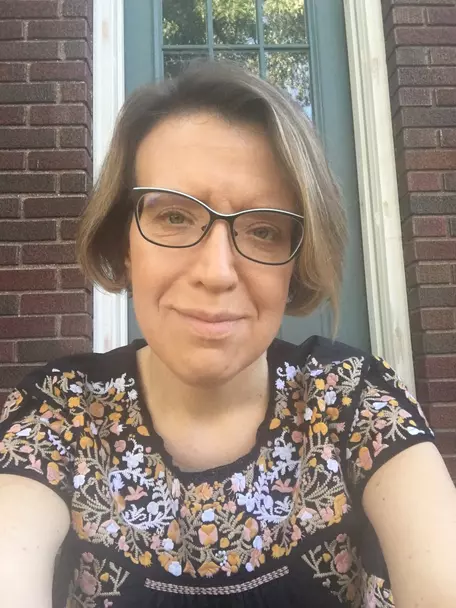March 2019 Spotlight: Caitlin Callahan
Dr. Caitlin Callahan is an Assistant Professor of Geology at Grand Valley State University (GVSU). In her profile, Dr. Callahan discusses her work in increasing diversity in STEM.
What is the focus of your current geoscience education research?
Currently, my primary research focus is on the topic of increasing diversity in geoscience and STEM more broadly. I am co-principal investigator on a grant funded by the National Science Foundation to explore the importance of relationships and community networks, also known as social capital, on career satisfaction in the geosciences. Our work is drawing attention to the importance for both students and mentors to articulate their respective needs and to incorporate those needs into mentoring relationships. Moreover, the findings in our project emphasize the necessity of explicit actions by mentors to help students build social capital. As part of this project, I have been collaborating with an undergraduate geology major at GVSU to focus on a subset of the full project data set and to explore the experiences of geoscientists, both students and professionals, with learning disabilities or attention deficit disorder.
What is your favorite or "must read" education research paper? Why is this paper meaningful for your work?
I can think of two. I hesitate to call either of them a "must read", and I'm not sure that, strictly speaking, they both qualify as education research. Nonetheless, they made an impression on me. I have a strong visual memory, and so I sometimes remember a paper especially because of a figure. One example is a study by Noonan et al. 2004 entitled Challenge and Success: A Qualitative Study of the Career Development of Highly Achieving Women with Physical and Sensory Disabilities. The authors constructed a figure to summarize their findings about factors that supported or challenged the women's sense of themselves. This paper stands out in my memory because it does an elegant job of conveying the lived experiences of the women featured. As a second example, the paper entitled "I Wish that I Belonged More in this Whole Engineering Group": Achieving Individual Diversity is a case study of one student. The title alone is a potent message. Like the Noonan et al. paper, this study is similarly effective at unpacking a student's lived experience. I actually first encountered both of these papers a couple of years ago. While any paper will have limitations, I like these examples because they each offer a story that is clear and well supported with qualitative data.
What has been the best tool/resource you've found for developing as a geoscience education researcher (organization, conferences, webinar, person, online resource)?
In reading previous GER Spotlight profiles, I certainly agree with past comments about the importance of mentors, collaborations, and conferences. In addition, for me the experience of editing, both my writing and the writing of others, has had a significant impact on my skills as a researcher. I realize it is a little odd to think of editing as a tool per se. Instead, I think of it as an opportunity. The process of editing forces me to think on several different levels simultaneously. There is the broad perspective: how does the paper fit into existing literature? At the other extreme, at the finest scale possible, I question each sentence. Do ideas flow from one to the next? In between those different vantage points, I look for alignment across each section of a paper. Editing is the slow, sometimes grueling, work of wrestling with ideas. Yet it is also in the intimacy of that process where I have felt my thinking stretched and challenged the most.
Read Dr. Callahan's most recent publication: Riggs, E., Callahan, C.N., and Brey, J. (2018). Research on Access and Success of Underrepresented Groups in the Geosciences. In St. John, K. (Ed.) (2018). A Community Framework for Geoscience Education Research. National Association of Geoscience Teachers


![[reuse info]](/images/information_16.png)